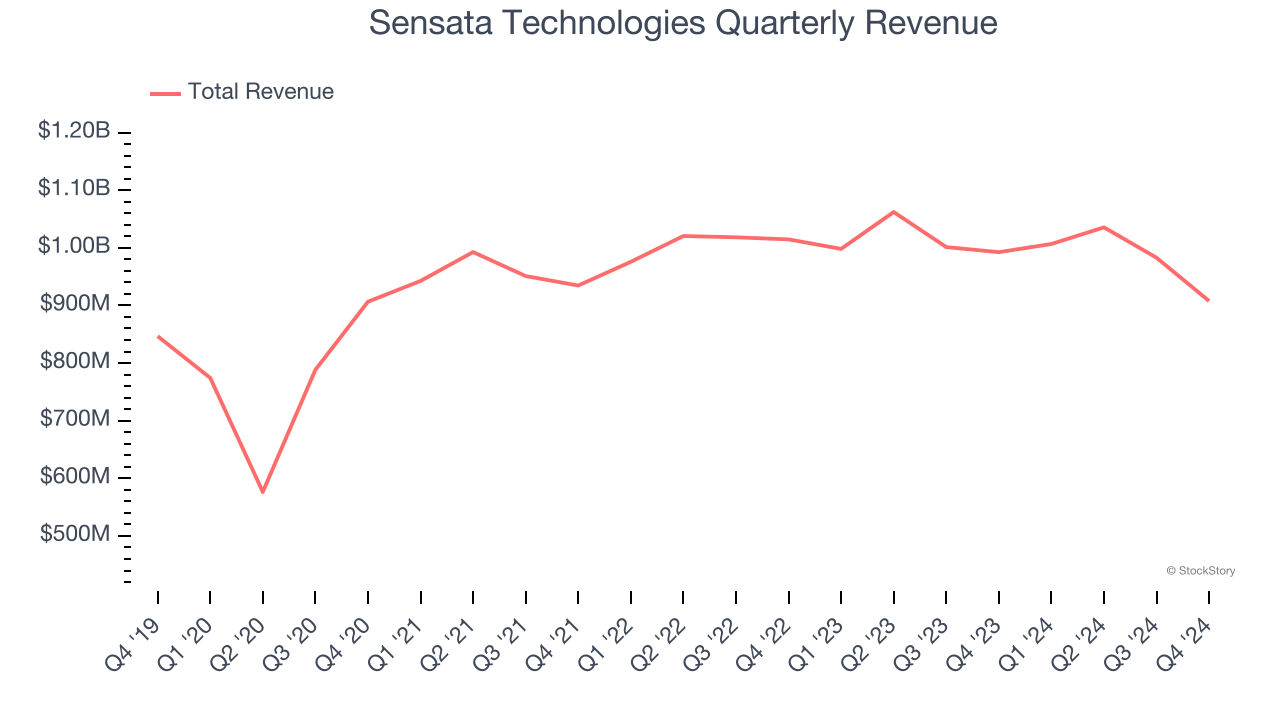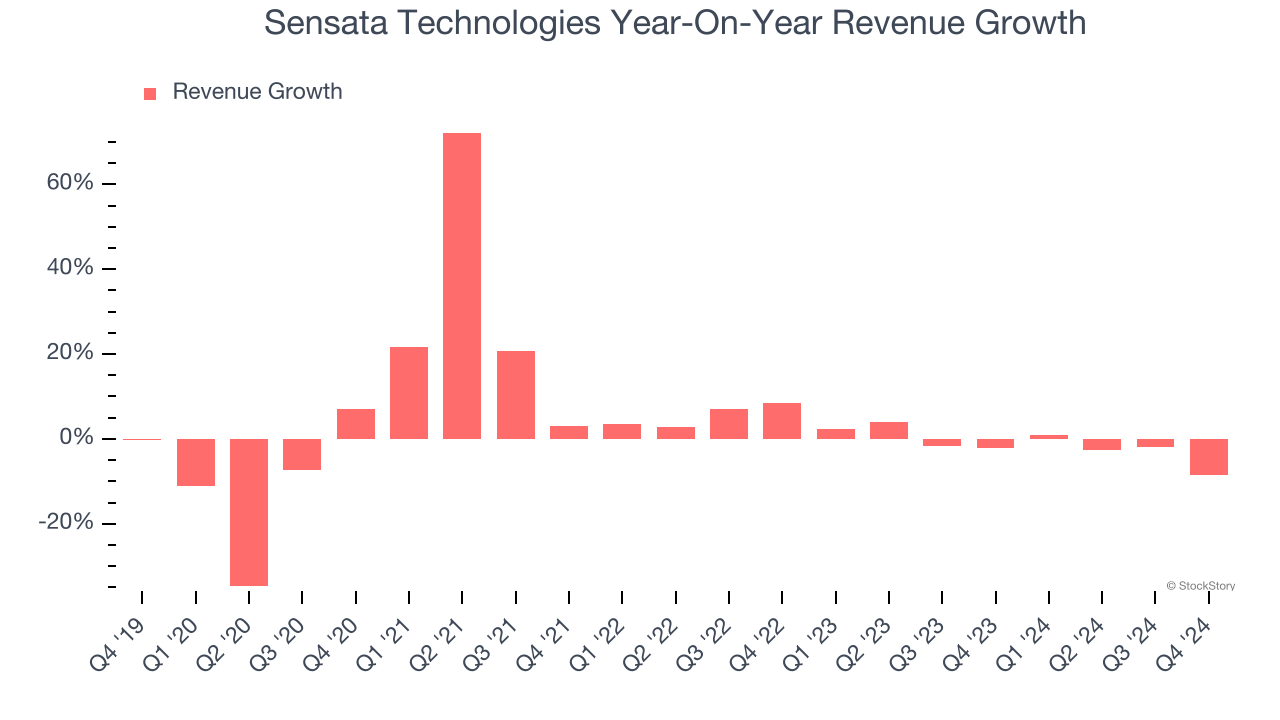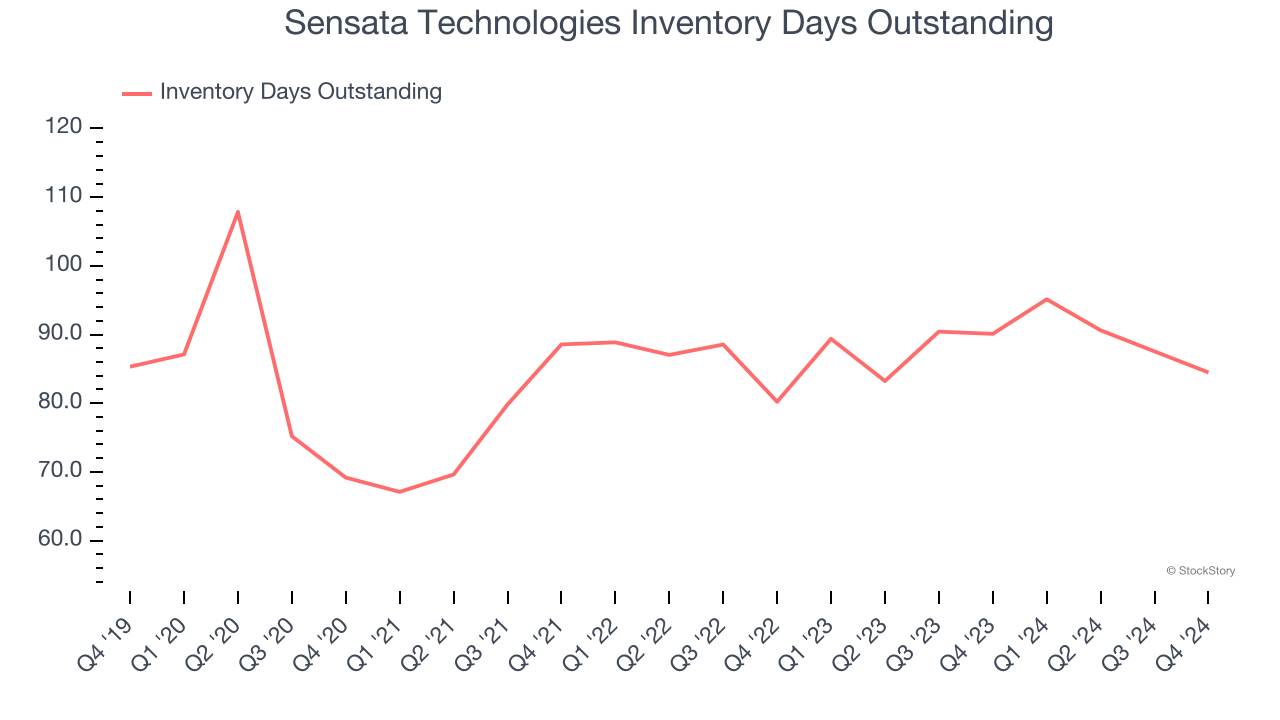
Sensor manufacturer Sensata Technology (NYSE: ST) reported Q4 CY2024 results beating Wall Street’s revenue expectations, but sales fell by 8.5% year on year to $907.7 million. On the other hand, next quarter’s revenue guidance of $880 million was less impressive, coming in 1.7% below analysts’ estimates. Its non-GAAP profit of $0.76 per share was 1.4% above analysts’ consensus estimates.
Is now the time to buy Sensata Technologies? Find out by accessing our full research report, it’s free.
Sensata Technologies (ST) Q4 CY2024 Highlights:
- Revenue: $907.7 million vs analyst estimates of $884.5 million (8.5% year-on-year decline, 2.6% beat)
- Adjusted EPS: $0.76 vs analyst estimates of $0.75 (1.4% beat)
- Adjusted EBITDA: $208.3 million vs analyst estimates of $204.3 million (22.9% margin, 2% beat)
- Revenue Guidance for Q1 CY2025 is $880 million at the midpoint, below analyst estimates of $895.6 million
- Adjusted EPS guidance for Q1 CY2025 is $0.72 at the midpoint, below analyst estimates of $0.75
- Operating Margin: 8.1%, up from -20.3% in the same quarter last year
- Free Cash Flow Margin: 15.3%, up from 5.7% in the same quarter last year
- Inventory Days Outstanding: 84, down from 88 in the previous quarter
- Market Capitalization: $3.86 billion
"Sensata had a strong finish to the year with fourth quarter revenue exceeding expectations, full year free cash flow increasing by over 40% compared to prior year, and adjusted operating margin increasing for the fourth consecutive quarter," said Stephan von Schuckmann, Sensata's Chief Executive Officer.
Company Overview
Originally a temperature sensor control maker and a subsidiary of Texas Instruments for 60 years, Sensata Technology Holdings (NYSE: ST) is a leading supplier of analog sensors used in industrial and transportation applications, best known for its dominant position in the tire pressure monitoring systems in cars.
Analog Semiconductors
Demand for analog chips is generally linked to the overall level of economic growth, as analog chips serve as the building blocks of most electronic goods and equipment. Unlike digital chip designers, analog chip makers tend to produce the majority of their own chips, as analog chip production does not require expensive leading edge nodes. Less dependent on major secular growth drivers, analog product cycles are much longer, often 5-7 years.
Sales Growth
Reviewing a company’s long-term sales performance reveals insights into its quality. Any business can have short-term success, but a top-tier one grows for years. Unfortunately, Sensata Technologies’s 2.7% annualized revenue growth over the last five years was sluggish. This was below our standards and is a rough starting point for our analysis. Semiconductors are a cyclical industry, and long-term investors should be prepared for periods of high growth followed by periods of revenue contractions.

We at StockStory place the most emphasis on long-term growth, but within semiconductors, a half-decade historical view may miss new demand cycles or industry trends like AI. Sensata Technologies’s history shows it grew in the past but relinquished its gains over the last two years, as its revenue fell by 1.2% annually. 
This quarter, Sensata Technologies’s revenue fell by 8.5% year on year to $907.7 million but beat Wall Street’s estimates by 2.6%. Company management is currently guiding for a 12.6% year-on-year decline in sales next quarter.
Looking further ahead, sell-side analysts expect revenue to decline by 5.6% over the next 12 months, a deceleration versus the last two years. This projection is underwhelming and suggests its products and services will see some demand headwinds.
Unless you’ve been living under a rock, it should be obvious by now that generative AI is going to have a huge impact on how large corporations do business. While Nvidia and AMD are trading close to all-time highs, we prefer a lesser-known (but still profitable) stock benefiting from the rise of AI. Click here to access our free report one of our favorites growth stories.
Product Demand & Outstanding Inventory
Days Inventory Outstanding (DIO) is an important metric for chipmakers, as it reflects a business’ capital intensity and the cyclical nature of semiconductor supply and demand. In a tight supply environment, inventories tend to be stable, allowing chipmakers to exert pricing power. Steadily increasing DIO can be a warning sign that demand is weak, and if inventories continue to rise, the company may have to downsize production.
This quarter, Sensata Technologies’s DIO came in at 84, which is one day below its five-year average. At the moment, these numbers show no indication of an unusual inventory buildup.

Key Takeaways from Sensata Technologies’s Q4 Results
It was encouraging to see Sensata Technologies beat analysts’ revenue, EBITDA, and EPS expectations this quarter. On the other hand, its revenue and EPS guidance for next quarter missed. Overall, the outlook made this a weaker quarter because markets are forward-looking, but investors seem to be rewarding the stock for its current print. Shares traded up 6.7% to $27.54 immediately following the results.
Big picture, is Sensata Technologies a buy here and now? If you’re making that decision, you should consider the bigger picture of valuation, business qualities, as well as the latest earnings. We cover that in our actionable full research report which you can read here, it’s free.






